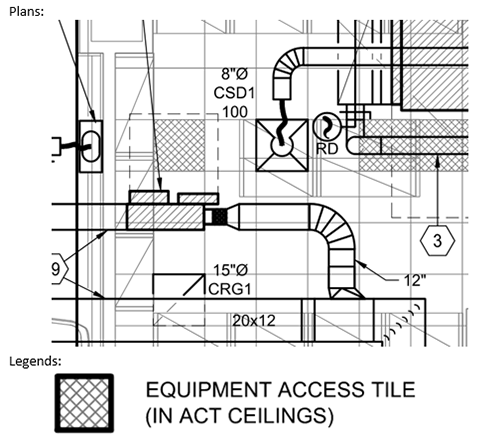Implementing dynamic methods to innovate with design is standard practice at Henderson Engineers. One of the tools we rely on to help us determine the best system design for a space is Building Information Modeling (BIM).
BIM is a process that uses data to generate digital representations of a facility’s physical and functional characteristics, including the building systems we engineer. This digital representation of the facility, often with 3D modeled systems, serves as a shared knowledge resource for anyone needing to make informed decisions during a facility’s lifecycle – from design, to construction, to operations, and beyond.
Efficiency and optimization are key components of innovation, and as Director of BIM/VDC, I focus on how we can use BIM to its maximum potential. Because using BIM is a key approach for Henderson designers and many of our clients, automating the process adds incredible value to a project.
Simply put, BIM automation uses pre-calculated design conditions to automate the placement of system components with different variables. While a simple idea, automating these design conditions and variables is a foundation of many of Henderson’s design initiatives. This process allows us to quickly react to project changes and focus more thoroughly on the engineering itself, while still producing quality models. The efficiency we achieve through BIM automation directly translates to time and cost savings for our clients without impacting the quality of our work. Below are three recent examples of how we utilized BIM automation to create efficient, optimized designs.

MAINTENANCE ACCESS
One way we implement BIM automation at Henderson is by using already modeled data to help guide our designs and collaborate with other disciplines and project partners. For example, we use a Dynamo script to identify equipment above Acoustic Ceiling Tile (ACT) ceilings based on data from linked architectural models, and then store that information in the individual ceiling elements for reference during design. Having this data allows us to automate the placement of an access tile family for ceiling height, grid placement, and grid rotation. This access tile reserves space for equipment maintenance (not typically shown on ceiling plans) and is a crucial design component that can be easily overlooked. While the initial layout may be automated, a designer always confirms final placement to ensure it makes sense for the designed equipment. We also use Revit to make sure there are no elements placed in the ceiling tile, and then run a QC script to verify the final design layout is still within range of the equipment and complies with equipment access requirements.
ACOUSTICS AND HVAC
With acoustics and HVAC professionals under the same roof at Henderson, we’re used to simple and efficient coordination. Duct silencer design requires a specialty expertise and custom calculation for the noise reduction needed across all octave bands of a system. However, with just a few inputs in the model (critical air terminal selection, AHU operating values, room constants, and lining options), we’re able to use a Dynamo script to calculate the operating noise values for each element in the critical path as well as the room levels and sum them up for a system total. From there, we’re able to ensure the design meets all code requirements. Using BIM automation for this process helps improve the design coordination across all disciplines – not just mechanical, electrical, and plumbing.
PIPE TRENCH CLEARANCES
Another example of how we implement BIM automation is by using a script to place pipe trench clearances on underslab piping. The excavation clearance of a pipe is a simple concept, but it can be disastrous if it’s not coordinated correctly. The pipe trench clearance zone is typically double-checked manually by cutting sections and/or calculating offsets. Henderson uses a script to place a clearance zone object, locating it on the centerline of the existing modeled pipe. Clearance zones that clash with structural foundation elements are then highlighted for the design team to review and correct. Again, this quickly provides a highly coordinated design using BIM data that our designers can then look at for final review and approval.
Leveraging existing data through BIM automation is just one of the many ways we continue to innovate at Henderson. The tools we use help us ensure we deliver quality designs for every client, every time. In fact, quality will be the topic of my next post – stay tuned to learn what defines quality BIM at Henderson and reach out for more information.
Join our email list to get the latest design innovations, technical content, new projects, and research from Henderson’s experts delivered straight to your inbox.